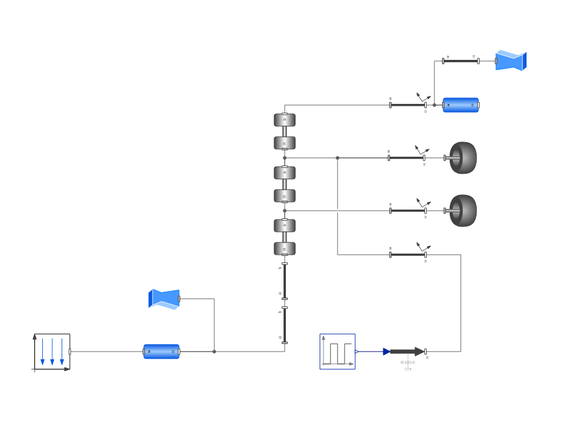Física
Amplíe el plan de estudios con experimentos emocionantes en dinámica y obtenga una mejor comprensión sobre cómo el modelado y la simulación pueden mejorar y fortalecer la comprensión en conceptos de física y matemáticas.
Gyroscopic Precession
Gyroscopic effects have been a source of both amazing engineering and amusement for many people. This phenomenon affects a variety of applications. The most obvious might be the helicopter, which behaves in a quite surprising way. In this example, the concept of gyroscopic precession is explored.
Para ejecutar este ejemplo necesitará
Las versiones más recientes de System Modeler y Mathematica.
Por favor haga una selección:
Obtener unaprueba gratuita Continuar
con la descarga
Animation showing how a rotating disc repositions when an external torque is applied to it.
Gyro Model
The first model in this example is a gyro that consists of a mount on which a rotor is placed in a system of two outer rings. This system makes it possible for the rotor to rotate with a full three degrees of freedom. The rotor is given an initial angular velocity, and after a little while an external force acts on the inner ring, inducing a phenomenon called gyroscopic precession.
With this model, you can see how the gyro moves when you apply forces to different points of it. Notice that the body moves as if the force had been applied 90 degrees "downstream"; a force applied to the right edge of the rotor makes the upper edge tilt backward.
Helicopter Model
This helicopter model consists of a box with a rotor mounted on top. The rotor has a fixed angular velocity and four points where forces can be applied. This would be similar to a real helicopter changing the pitch angle of the blades. Notice where in the rotor the force is applied in order to propel the helicopter forward.
Automatically generated animations in SystemModeler can be used to visualize the forces affecting the helicopter during liftoff.
Wolfram System Modeler
Probar
Comprar
System Modeler está disponible en inglés
y japonés
para Windows, macOS y Linux »
¿Preguntas? ¿Comentarios? Contacte a un experto de Wolfram »
